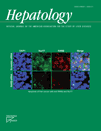Genotype 4 hepatitis C virus: Beware of false-negative RNA detection†
Potential conflict of interest: Nothing to report.
We have followed with interest the debate regarding the ability of the COBAS AmpliPrep/COBAS TaqMan (CAP/CTM) hepatitis C virus (HCV) test (Roche, Meylan, France) to accurately detect and quantify genotype 4 HCV.1-4
We recently identified seven genotype 4 samples [4h (4); 4k (2); 4l (1)] from HCV antibody–positive patients; we repeatedly found them HCV RNA undetectable with CAP/CTM, but we discovered viral loads greater than 5 log10 IU/mL with the Abbott RealTime HCV assay (Abbott, Rungis, France). When the 5′-noncoding gene of these undetected samples was compared to sequences from 29 genotype 4 samples [4 (5); 4a (6); 4c (1); 4d (9); 4f (1); 4g (2); 4h (2); 4k (2); 4r (1)], significant sequence differences between underquantified samples (difference between the two assays > 1 log10 IU/mL), undetected strains, and samples with comparable viral loads were identified at positions 145 (P < 0.0001), 165 (P < 0.0001), 203 (P < 0.0001), and 204 (P = 0.0002) with the chi-square test. Positions 203 and 204 represent a nucleotide insertion in a few subtypes (f, g, h, k, o, p, and q) and are unlikely to play a role in CAP/CTM underquantification. However, any mutation at position 145 (rarely described) could dramatically impair the performance of the Roche assay, whereas a mutated nucleotide at position 165 (constantly found in subtypes g, h, k, l, m, o, and q) leads to decreased quantification of many genotype 4 subtypes.2, 5, 6
In contrast to the statement by Halfon et al.4 on the possible use of CAP/CTM, we would like to stress the risk incurred when this assay is used.4 Because highly sensitive real-time polymerase chain reaction–based assays for viral load monitoring are also used as first-line tools to document active HCV replication, our strict recommendation is to not use CAP/CTM to initially identify an active HCV infection or in the case of acute hepatitis because the risk of missing a genuine HCV infection is not negligible.2 Even though the prevalence of particular mutants carrying both 145 and 165 nucleotide substitutions is probably low, it is our duty not to deliver a false reassuring diagnosis of cleared HCV infection.
References
Sepideh Akhavan M.D.* , Christophe Ronsin M.D. , Syria Laperche M.D.§, Vincent Thibault M.D.* , * Virology Laboratory, Hôpital Pitié-Salpêtrière, Assistance Publique–Hôpitaux de Paris, Paris, France, Pierre et Marie Curie University, Paris, France, Laboratoire Biomnis, Ivry sur Seine, France, § Institut National de la Transfusion Sanguine, Paris, France.




